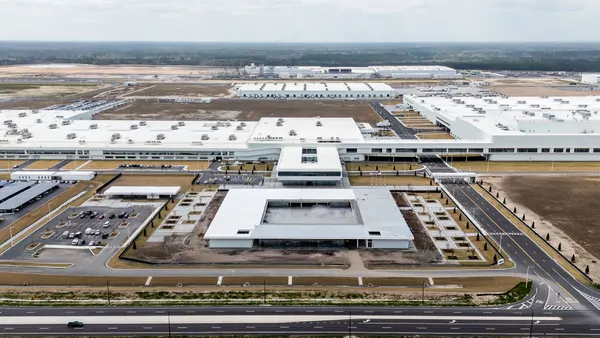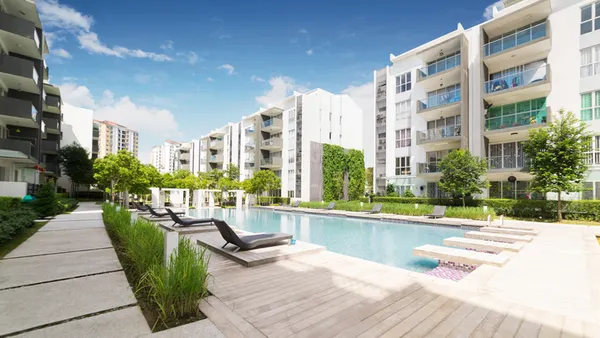Dive Brief:
-
Construction spending fell 1.3% from May to June to a seasonally adjusted annual rate of $1.205 trillion, the Commerce Department reported Tuesday.
-
Private residential construction dropped 0.2% in June to a rate of $502.9 billion, while private nonresidential construction dropped 0.1% to a rate of $437.8 billion. Within residential, single-family rose 0.3%, while multifamily decreased 2.9%. Public construction slid 5.4% during the period.
-
June's construction spending figure is still 1.6% ahead of the year-ago mark, and spending in the first half of 2017 is 4.8% higher than the same period last year.
Dive Insight:
Construction spending has been volatile throughout 2017. While spending grew during the first three months of this year, April's decrease slowed the category's momentum, likely contributing to May's stagnant figures.
Analysts had been hopeful about the year's spending growth, with Dodge Data & Analytics economists forecasting that total construction starts could jump 5% from 2016 to $712.9 billion. Still, the level of construction spending has come up short of expectations so far this year, according to Associated Builders and Contractors Chief Economist Anirban Basu.
With five-straight months of positive demand for design services, according to the American Institute of Architects' Architecture Billings Index, and a growing private sector construction backlog, spending should be on an upward track. More still, growing payrolls — which included 16,000 net new jobs in June — point to a future increase in spending.
Though the segment could get a lift from the Trump administration's long-awaited infrastructure plans, some say infrastructure is in line behind Congress' tax reform plans, following the Senate's failed healthcare reform bill. President Donald Trump's 2018 budget proposal came as a good omen to industry observers who were eager for the prospect of $1 trillion in new U.S. infrastructure investments. However, with details on that plan still sparse, owners and even developers have adopted a "wait and see" approach to spending.
While nonresidential spending may be at a crossroads, the residential segment could buoy the industry in the coming months. June's housing starts beat analyst expectations, rising to a seasonally adjusted annual rate of 1.215 million. Both single- and multifamily starts were up for the month, alongside a strong rebound in building permit authorizations, suggesting future growth in the segment.













